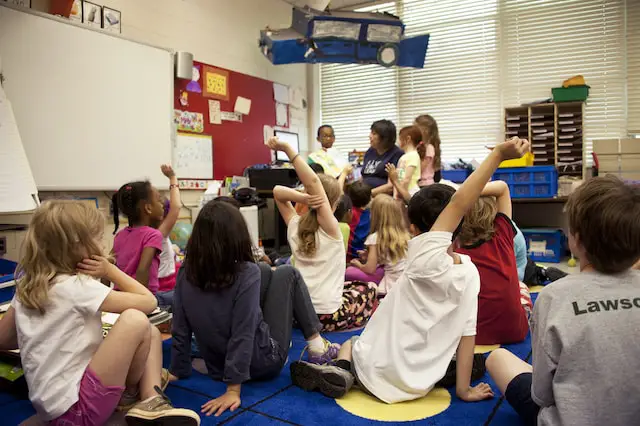Motivation is the driving force that helps individuals pursue their goals and achieve success. In education, motivation plays a crucial role in student success. When motivated, students are more engaged in their learning, leading to better academic performance. On the other hand, a lack of motivation can harm a student’s academic progress. This article will discuss some effective motivational activities for students that can help them stay motivated and achieve their academic goals.
What We Will Cover
What Is Student Motivation and Reasons Undergrads Lack It

Student motivation is the drive and desire to learn and achieve academic success. Motivation is not a one-size-fits-all concept, and it can vary from one student to another. Some students are motivated by the desire to achieve good grades, while others are motivated to learn new things and expand their knowledge.
Unfortunately, many undergrads lack motivation in their studies, so tutors have to come up with various student activities ideas to change the situation. The reasons for this can be numerous, including:
- Lack of interest in the subject matter
- Feeling overwhelmed or discouraged by the workload
- Personal issues, such as family problems or mental health issues
- Lack of understanding of the relevance of the subject matter
- Poor teacher-student relationships
- Boredom or lack of engagement in the learning process
Activities for Classroom: Tips & Tricks to Get Students Motivated

Finding motivation for students in the classroom can be a challenging task, but many effective strategies can help. Here are some tips and tricks to get students motivated in the classroom:
- Use active learning techniques: Passive learning can quickly become boring and disengaging for students. Using active learning techniques such as group discussions, hands-on activities, and interactive presentations can help keep students engaged and motivated.
- Use technology: Technology can be an effective tool for motivating students. Interactive presentations, online quizzes, and educational games can make learning more fun and engaging.
- Provide timely feedback: Students need feedback on their progress to stay motivated. Providing timely feedback on assignments and assessments can help students understand where they need to improve and keep them motivated to do better.
- Create a positive learning environment: A positive learning environment can help students feel motivated and encouraged to learn. Teachers can create a positive learning environment by praising students’ efforts, fostering a sense of community, and encouraging students to take risks and learn from their mistakes.
- Set clear expectations: Students need to know what is expected of them in order to stay motivated. Teachers can set clear expectations for assignments, assessments, and classroom behavior to help students stay on track and motivated to succeed.
The Benefits of Fun Activities in Class

Incorporating fun activities into the classroom can have many benefits for students, including:
- Increased engagement: Fun activities can help students become more engaged in the learning process, leading to better retention of information and improved academic performance.
- Reduced stress: Students who are stressed or overwhelmed may find it difficult to stay motivated. Fun activities can help reduce stress and create a more relaxed and enjoyable learning environment.
- Improved relationships: Fun activities can help build positive teacher-student relationships, leading to increased motivation and better academic performance.
- Enhanced creativity: Fun activities can help stimulate creativity and critical thinking skills, leading to improved academic performance and a more enjoyable learning experience.
Fun Activities For Classroom Teachers

Here are five fun activities for elementary school teachers:
- Make a class book. This is a great way to get students to work together and express their creativity. Have each student draw a picture or write a story, and then compile them all into a book. You can even have students illustrate the book or create a cover.
- Have a scavenger hunt. This is a fun way to get students moving and learning about their surroundings. Hide objects around the classroom or school, and give students clues to help them find them. You can also make the scavenger hunt more challenging by adding math or science problems to the clues.
- Play a game. There are many fun games that can be played in the classroom. Some popular options include Simon Says, Charades, and Heads Up! Games are a great way to break up the monotony of a lesson and get students moving and interacting with each other.
- Have a dance party. Put on some music and let students dance their hearts out! Dancing is a great way to get students moving and having fun, and it can also be a great way to relieve stress.
- Read a story aloud. Reading aloud is a great way to encourage students to love reading. Choose a story that you think your students will enjoy, and read it to them in a dramatic voice. You can also have students act out the story or draw pictures of the characters.
These are just a few ideas for fun activities that elementary school teachers can do with their students. With a little creativity, you can come up with many other ways to keep your students engaged and learning.
The Main Signs of Students’ Lack of Motivation in College

Motivation in education is an essential factor that drives students to learn and achieve their academic goals. Lack of motivation, on the other hand, can have a negative impact on a student’s academic progress and overall success. In college, where students are expected to be self-directed learners, it is particularly important to identify signs of a lack of motivation early on so that appropriate measures can be taken. In this article, we will discuss the main signs students lack motivation in college.
- Poor Attendance or Lateness to Class
One of the most obvious signs of a lack of motivation in college is poor attendance or lateness to class. Students who lack motivation may skip classes or arrive late frequently, indicating a lack of interest or engagement in learning.
- Decreased Participation in Class Discussions and Activities
Students who lack motivation may also exhibit decreased participation in class discussions and activities. They may be disengaged or uninterested in the subject matter and may not contribute actively to class discussions, leading to a lack of learning and understanding.
- Lack of Effort in Completing Assignments or Assessments
A lack of motivation can also lead to a lack of effort in completing assignments or assessments. Students who lack motivation may procrastinate, miss deadlines, or submit incomplete or poorly done work.
- Low Grades or Academic Performance
Another sign of a lack of motivation in college is low grades or academic performance. Students who lack motivation may not put in the necessary effort to study, prepare for exams, or complete assignments, leading to poor academic performance.
- Negative Attitude towards the Subject Matter or Learning Process
Students who lack motivation may also exhibit a negative attitude toward the subject matter or the learning process itself. They may express frustration, boredom, or disinterest in the material, leading to a lack of engagement and motivation to learn.
Final Thoughts About Motivational Activities for Students

Motivating students is a crucial aspect of education that can significantly impact their academic success. Lack of motivation can be caused by various factors, such as personal issues, poor teacher-student relationships, and feeling overwhelmed by the workload. However, there are effective strategies that teachers can use to motivate their students, such as using active learning techniques, incorporating technology, providing timely feedback, creating a positive learning environment, and setting clear expectations.
Additionally, incorporating fun classroom activities can benefit students, such as increased engagement and reduced stress. It’s important to be able to identify the signs of a lack of motivation in college, such as poor attendance, decreased participation, lack of effort in completing assignments, low grades, and negative attitude towards the learning process, so that appropriate measures can be taken to address them. By implementing motivational activities and strategies, teachers can help their students stay engaged and motivated to achieve their academic goals.



